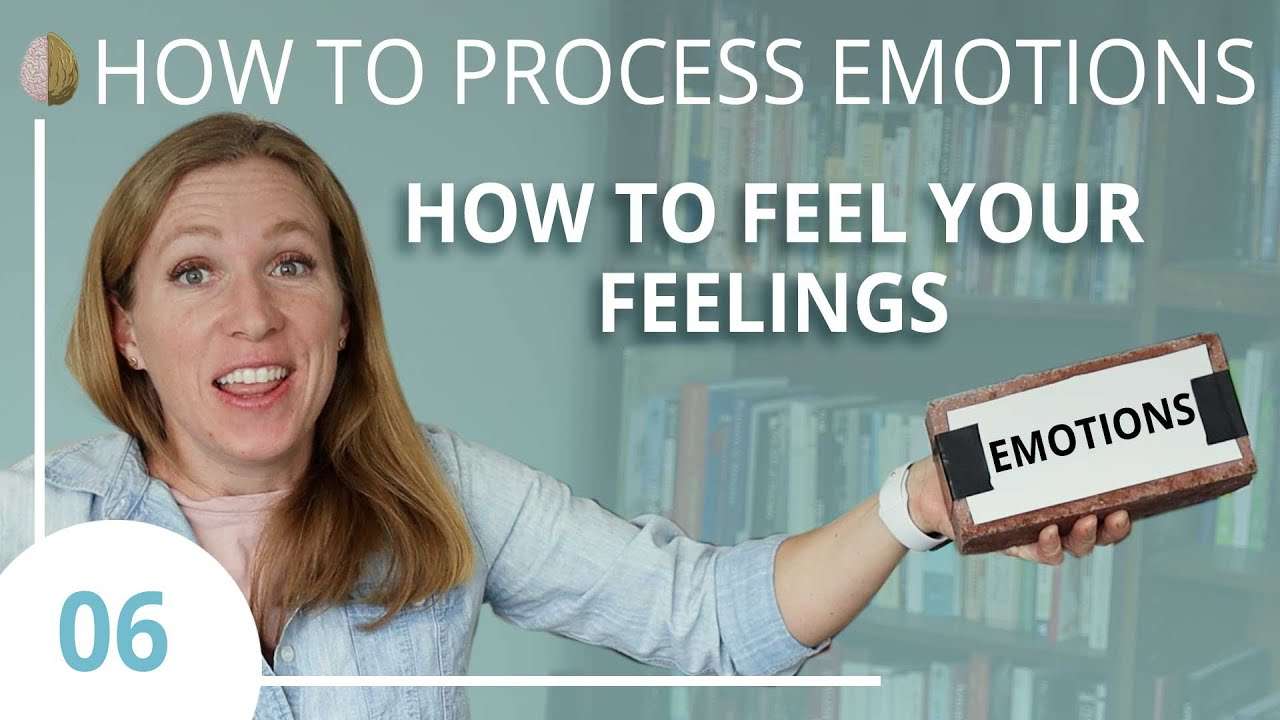Yesterday was a challenging day for me. I put my oldest son on a plane with the expectation that I won’t see him face-to-face for 2 years. (Her son left to serve a 2 year mission for his church.)
I’ve felt all my feelings in the past week regarding missing him, as well as mourning the loss of our current family dynamics. I grappled with him leaving the nest and finding out his parents are whackos, or him realizing all the ways I underperformed/hurt/neglected as his mom (he already knows ).
I spent yesterday trying to feel my feelings, allowing myself a whole day for mental health. Whenever I’d try to pull myself up “by my bootstraps” I’d reconsider, saying to myself what I tell my kids all the time, “You’re supposed to feel your feelings.” So I did, even though my M.O. is to cover up my feelings with busyness. It helped that I have people around me who I’ve watched do similar things and feel similar feelings, so there was a measure of acceptance for what I was feeling, a willingness to give my feelings the time they needed.
Today feels better. There’s access to easier, lighter, happier energies. I feel like I can breathe sighs of relief and smile. I feel like I can encourage and support myself and my family anew. I feel a draw to balance today with hope, connection, brightening the day in whatever way pleases me. And I wonder if I can feel this today because I honored my feelings yesterday.
In this example, Beth wanted to distract herself by keeping busy, she wanted to suppress her feelings of sadness, but instead she gave herself some space to work through them gently, and by the next day they had resolved.
So let’s talk about how to practice willingness- Describe, Don’t Judge– Don’t label what you are currently experiencing as good or bad. Remember all core emotions serve a function. So instead of judging with words like: good, bad, terrible, awful, great, best, worst, use words like: uncomfortable, unpleasant, painful, sensitive, tender, hot, cold, sharp, dull, warm, smooth, gentle, soft, or pleasant.
It is normal, healthy, and beautiful to feel emotions. This is a beautiful part of life. The path to healing from mental illness is learning to move through them, not avoid them.
By Sonja V. Batten, Ph.D.
This presentation is an excerpt from the online course “ACT for Trauma: PTSD and Beyond”.
Highlights
- Willingness involves opening up to whatever private experiences are present without trying to reduce or change them.
- Willingness is not the same as tolerating, putting up with, or being resigned to those experiences.
- The process of applying willingness can only be learned through experience and practice.
Transcript

Willingness is seen as a process in which an individual can choose to open up and experience the full range of private experiences without having to change or defend against them. It sounds simple enough. But what actually is willingness? Well, let’s talk some about what willingness is and what it isn’t.
So, first of all, to be willing to have difficult thoughts and feelings is not the same as wanting those experiences.
If you’ve ever gone to physical therapy, for example, you know that some parts of physical therapy are actually pretty painful or don’t feel very good. So you may not want those parts of physical therapy that don’t feel good or that hurt for a day afterward, but you may be willing to have those experiences as part of your recovery or rehabilitation process because you understand that it is going to move you forward with respect to your health and well-being.
References
Batten, S. V. (2011). Essentials of acceptance and commitment therapy. SAGE Publications Ltd.

Willingness is also not just because you’re willing to have something, you’re not necessarily indulging or attempting to hold on to any given experience. So, just because you’re willing to have the experience of sadness, it doesn’t mean after a breakup, maybe, it doesn’t mean that you sit there and surround yourself with reminders of the lost relationship and try to maintain those feelings of sadness. You’re willing to have them when they show up, but you’re not trying to keep them going or hold on to them in some way.
References
Batten, S. V. (2011). Essentials of acceptance and commitment therapy. SAGE Publications Ltd.

It also has a different quality from tolerating or putting up with experiences or being resigned to those experiences. So when we say you need to be willing to have the pain and discomfort that comes with growth, it’s not about “Oh, okay. Fine. I’ll have it.” That’s not what we’re talking about with willingness. We’re talking about an openness, a lack of defense. Not sort of being resigned to it in a difficult way where you’re still evaluating it and judging it in a negative way, and yet sort of “I guess I’m willing to have that.” That’s not what we’re talking about.
References
Batten, S. V. (2011). Essentials of acceptance and commitment therapy. SAGE Publications Ltd.

And we’re also not talking about sort of tolerating or putting up with actual difficulties in life that you can do something about. If there’s something that the client can do to change the circumstance, we’re very much in favor of that. So, if there are things that can be controlled, then committed action is the appropriate response. It’s when the situation or the internal experience cannot be changed that willingness is the move to make.
References
Batten, S. V. (2011). Essentials of acceptance and commitment therapy. SAGE Publications Ltd.

It’s also not the same as wallowing around in difficult content. We talked about the swamp metaphor before. It’s not just going into the swamp and then plunking down and sort of wallowing around in the swamp and getting in touch with the swamp. The therapist helps the client who’s in the swamp look up and see that there is life worth living on the other side of the swamp and that they can move through the swamp together.
References
Batten, S. V. (2011). Essentials of acceptance and commitment therapy. SAGE Publications Ltd.

And willingness is not something that you can only do part way. You can’t say, “Well, I’m willing to feel anxiety up until a certain point, but once it gets to this point like, “I’m willing to have anxiety up until a rating of 80 subjective units of distress, but once it’s beyond 80, I can’t be willing to have that.” Well, the mind is a tricky thing. You know, even our own minds are not necessarily our friends when it comes to this sort of thing.
References
Batten, S. V. (2011). Essentials of acceptance and commitment therapy. SAGE Publications Ltd.

It’s sort of like if you have a small child that you’ve ever taken to the grocery store and the child is tired and wants a candy bar. And you’re standing in the long checkout line and they want the candy bar and they tell you so. And you tell them no and they start crying. And you think to yourself, “Okay. I know I’m not supposed to reinforce this. I’m going to just let the child cry and not worry about it.” And so the child starts crying and crying.
References
Batten, S. V. (2011). Essentials of acceptance and commitment therapy. SAGE Publications Ltd.

And you think to yourself, “Okay. Well, people are starting to look. I mean, I can take this if he gets up to like 80% of a tantrum. But if it goes beyond that, I’m going to have to give in and give him the candy bar because people are looking at me like I’m a terrible parent.” And so the child starts crying and crying…
References
Batten, S. V. (2011). Essentials of acceptance and commitment therapy. SAGE Publications Ltd.

Well, what if the child knew that all they had to do was get above that 80% mark of tantruming? What do you think they would do?
Absolutely, they’d get up to 81%, 82% just to get that candy bar. And we would argue in ACT, that our minds sort of function in that same way…
References
Batten, S. V. (2011). Essentials of acceptance and commitment therapy. SAGE Publications Ltd.

I mean, our minds are not our friends and you can’t keep a secret from your own mind. So, if you think to yourself, “Okay, I’m willing to have this anxiety, but only up to a certain point. And once it gets beyond that point, though, I’m going to have to do something. I’m going to have to distract myself, take a drink, etc.”
Well, if you’re making those sorts of bargains with yourself, your mind knows it. And what do you think is going to happen? The same thing as that tantruming child—just with your own anxiety or whatever the private experience is that you’re trying to practice willingness with and setting limits on.
References
Batten, S. V. (2011). Essentials of acceptance and commitment therapy. SAGE Publications Ltd.

So really, it’s all or nothing. Either you’re willing to have it or you’re not and you make that choice. It’s sort of like jumping. There’s no halfway in jumping. Like if I put a piece of paper on the floor and I said, “Can you jump off of this piece of paper?” there are just a few things that you do. Maybe you bend your knees, you launch yourself into space, and you wait until you come down. That’s what there is to jumping.
References
Batten, S. V. (2011). Essentials of acceptance and commitment therapy. SAGE Publications Ltd.

There’s no halfway about it. It may seem like there’s a halfway when you’re just talking about jumping off a piece of paper. Maybe it seems like you can just sort of gently step off. But it becomes harder to do that in a halfway manner as the jump gets bigger.
References
Batten, S. V. (2011). Essentials of acceptance and commitment therapy. SAGE Publications Ltd.

So then, if I put a chair in front of you and I said, “Jump off this chair,” again, it’s the same motions. It’s bend your knees, launch yourself into space, and wait until you come down. That’s jumping. And it gets harder to sort of put your toe down from a chair. But it’s also the same thing if I said to jump off a building. You bend your knees, you launch yourself into space, and you come down. And it’s the same thing as willingness. There are a few sort of steps to it. And as you do it, you have to be willing to do it 100%, no matter what size the jump is.
References
Batten, S. V. (2011). Essentials of acceptance and commitment therapy. SAGE Publications Ltd.

Now, you can set limits on it. You can say, “I’m willing to be present with this experience for 5 minutes or 1 minute or 5 seconds.” You can put limits on it based on time or based on situation. But what you can’t do is put limits on it based on level of intensity of the experience because again, then you get to that tantruming child example where if you’re putting limits on it based on intensity, you’re going to end up in a loop that just makes it more likely that you’re going to have that intensity, and you’re going to have a reason to avoid and not be practicing willingness truly.
References
Batten, S. V. (2011). Essentials of acceptance and commitment therapy. SAGE Publications Ltd.

And willingness can’t be used to control thoughts and feelings. So sometimes, people have a paradoxical experience when they first practice willingness. Like maybe they have an experience with panic or anxiety where you’ve been working on practicing willingness and they start to feel that panicky feeling and the anxiety shows up and they truly open up. They jump.
They’re willing to be willing. And the anxiety actually goes down or goes away. And they’ve never had that experience before.
References
Batten, S. V. (2011). Essentials of acceptance and commitment therapy. SAGE Publications Ltd.

And so their mind automatically tries to give them a rule about “Okay, so if I’m willing to have the panic, the panic will go away.” And so the next time when the panic symptoms start to happen, they say, “Okay, I’m willing to have it because I know it will go away.” Well, chances are it’s not going to work that way all the time…
References
Batten, S. V. (2011). Essentials of acceptance and commitment therapy. SAGE Publications Ltd.

And so if you’re willing to have something in order for it to go away, that’s not willingness. Again, that’s avoidance or control.
So willingness can’t be used to control thoughts and feelings even though sometimes, when you are willing, it may change the quality of the experience, and maybe it becomes less aversive. But if you use willingness as a tool to make something go away, change, be less aversive, then you’re not actually practicing willingness.
References
Batten, S. V. (2011). Essentials of acceptance and commitment therapy. SAGE Publications Ltd.

And sometimes, it’s an act that involves not acting. I mean, sometimes, what willingness is, is being willing to just sit with something. And sometimes, we get so focused on what’s the action, what’s the activity that I need to do. But in this case, a lot of times, willingness is doing nothing and just allowing yourself to be present with what’s there.
References
Batten, S. V. (2011). Essentials of acceptance and commitment therapy. SAGE Publications Ltd.

It’s not approval or forgiveness. When we work with trauma survivors, oftentimes, something has been done to them or happened to them, and we start talking about being willing to have what’s there. We’re not communicating that they should want what happened to them to have happened or that it’s okay that what happened happened. We’re not talking about willingness as a way of signifying that they approve of what happened or that they forgive the person. It’s about working with the client to accept their history; that it happened. We’re working on acceptance of what happened but not saying that what happened to them is okay.
References
Batten, S. V. (2011). Essentials of acceptance and commitment therapy. SAGE Publications Ltd.

So, the heart of ACT involves repeatedly working with the client to be willing to experience whatever private events arise in the service of being able to more successfully move forward with life. It entails a posture and a way of responding to one’s own internal experiences that is open, undefended, and flexible.
References
Batten, S. V. (2011). Essentials of acceptance and commitment therapy. SAGE Publications Ltd.

And these messages of moving toward willingness can be very scary or difficult to contemplate—especially for a client who has had a really difficult history or who has very intense private experiences. So it’s important that the therapist remind the client that this is a choice that only the client can make. Over time, the client’s life will provide the data to indicate whether or not a willing approach facilitates more effective living.
References
Batten, S. V. (2011). Essentials of acceptance and commitment therapy. SAGE Publications Ltd.

So, some key points. Willingness involves opening up to whatever private experiences are present for the person—thoughts, feelings, memories, bodily sensations, whatever—without trying to reduce or change them. However, willingness is not the same as tolerating, putting up with, or being resigned to those experiences. And even when a person conceptually understands the concept of willingness, the actual process of applying willingness can only be learned through experience and practice.




